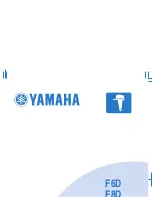
http://www.tyan.com
70
Appendix
Glossary
Devices and operating systems that are not Plug and Play require you to
reconfigure your system each time you add or change any part of your
hardware.
The term
RAM
(
R
andom
A
ccess
M
emory), while technically referring to a type
of memory where any byte can be accessed without touching the adjacent
data, is often used to refer to the systems main memory. This memory is
available to any program running on the computer.
ROM
(
R
ead-
O
nly
M
emory) is a storage chip which contains the BIOS (Basic
Input/Output System), the basic instructions required to boot the computer
and start up the operating system.
SDRAM
(
S
ynchronous
D
ynamic
RAM
) is so-called because it can keep two
sets of memory addresses open simultaneously. By transferring data alter-
nately from one set of addresses, and then the other, SDRAM cuts down on
the delays associated with non-synchronous RAM, which must close one
address bank before opening the next.
The
serial port
is so called because it transmits the eight bits of a byte of data
along one wire, and receives data on another single wire (that is, the data is
transmitted in serial form, one bit after another).
SIMM
S
ingle
I
n-line
M
emory
M
odules are the most common form of RAM.
They must be installed in pairs, and do not have the carrying capacity or the
speed of DIMMs.
SIMM bank/socket
SIMM sockets are the physical slots into which you stick
SIMM modules. A pair of SIMM sockets form a SIMM bank, and act as a unit.
If only one socket is filled, the bank will not operate.
In
Sleep/Suspend mode
, all devices except the CPU shut down.
SRAM
S
tatic
RAM
, unlike DRAM, does not need to be refreshed in order to
prevent data loss. Thus, it is faster, and more expensive.
In
Standby mode
, the video and fixed disk drive shut down; all other devices
operate normally.


































